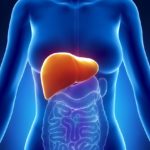Endometriosis: More Than Your Average Monthly Nuisance
 I recently saw an article on my Facebook feed from a popular online publication about a company offering women time off during their periods. I thought how wonderfully progressive an idea this is, to let women, if they need to, take time off for what can sometimes be a horrible time of the month. It’s hard to be productive if you’re in severe pain or fatigued from heavy bleeding. It reminds me of “The Red Tent” by Anita Diamant, a historic fictional novel, where women were allowed to have time off from their routine duties to take care of themselves during this naturally yin time.
I recently saw an article on my Facebook feed from a popular online publication about a company offering women time off during their periods. I thought how wonderfully progressive an idea this is, to let women, if they need to, take time off for what can sometimes be a horrible time of the month. It’s hard to be productive if you’re in severe pain or fatigued from heavy bleeding. It reminds me of “The Red Tent” by Anita Diamant, a historic fictional novel, where women were allowed to have time off from their routine duties to take care of themselves during this naturally yin time.
Unfortunately, my joy quickly turned to horror as I read the comments. Post after post after post were women callously criticizing this idea, saying that we need to “suck it up” and women shouldn’t get special treatment for a few cramps. Clearly, these women don’t suffer from a condition called endometriosis or they might be in full support of something that Japan has had in place for over 70 years. And with March being Endometriosis Awareness Month, I thought this is a great opportunity to bring some much-needed awareness to this commonly misdiagnosed condition.
 Endometriosis <en-doh-me-tree-o-sis> is a condition where part of the lining of your uterus, the endometrial tissue, starts growing in places it shouldn’t. It usually sticks to the lower pelvic area but there have been some cases of tissue growing vastly outside of that, like the lungs or nose. As you can imagine, tissue growing where it shouldn’t causes problems, such as scarring, which can lead to different complications, like infertility depending on where it’s growing.
Endometriosis <en-doh-me-tree-o-sis> is a condition where part of the lining of your uterus, the endometrial tissue, starts growing in places it shouldn’t. It usually sticks to the lower pelvic area but there have been some cases of tissue growing vastly outside of that, like the lungs or nose. As you can imagine, tissue growing where it shouldn’t causes problems, such as scarring, which can lead to different complications, like infertility depending on where it’s growing.
The tricky part about endometriosis is that it can be difficult to diagnose. Endometriosis can cause symptoms such as pelvic pain, irregular periods, heavy bleeding during periods, lower abdominal or back pain, pain during intercourse, bloating, nausea, vomiting, pain during exercise, or pain with bowel movements.¹ Clinically speaking, pain can be due to a large host of conditions so endometriosis can often be overlooked. There’s also been studies that indicate that the level or amount of pain a woman has does not correlate with the severity of her endometriosis so a woman could have minimal pain which might lead a doctor to not strongly consider endometriosis but in reality, have a severe form of the disease.²
The best way to diagnose is through a laparoscopic surgery, a procedure in which they insert a camera through your belly button and look for lesions. In a few instances, endometriosis can be diagnosed with a basic ultrasound but medically the gold standard is laparoscopic surgery. For some women with suspected endometriosis, surgery may not be a viable option so diagnosis is made based on symptoms and treatment is birth control pills.
Luckily, natural treatments are more diverse and safe than just birth control or surgery. Nutritional changes, such as eating low inflammatory foods can make a big difference in pain and disease progression. There are botanicals such as Verbena and Vitex to help balance hormones as well as cramp bark (Viburnum opulus) that can be used to help naturally ease the pain. Another simple way to help break up the tissue is with castor oil packs. Using castor oil topically over the uterus with heat is a great anti-inflammatory and pain reliever. Finally, there is a growing body of evidence that endometriosis is associated with environmental toxins like polychlorinated biphenyls (PCBs).³ Reducing your exposure by avoiding dairy, meat, and contaminated fish as well as doing regular detox programs, like our Reclaim Your Cycle Detox, is key to managing this disease.
With endometriosis affecting at least 10% of women in the population, it’s about time that we recognize the how misdiagnosed this painful condition is. With more celebrities like Lena Dunham, the creator of the popular TV show “Girls”, publicly sharing their story about their struggles with endometriosis, it will hopefully bring not only more awareness of this disease but also more compassion and support to those that suffer from it.
1. “Endometriosis.” Medscape. <http://emedicine.medscape.com/article/271899-overview>
2. Marana R, et al. “Evaluation of the correlation between endometriosis extent, age of the patients and associated symptomatology.” Acta Europaea Fertilitatis. 1991, 22(4):209-212.
3. Yu ML, et al. “Menstruation and reproduction in women with polychlorinated biphenyl (PCB) poisoning: long-term follow-up interviews of the women from the Taiwan Yucheng cohort.” International Epidemiological Association. 2000; 29: 672-677.

 Next Post
Next Post

